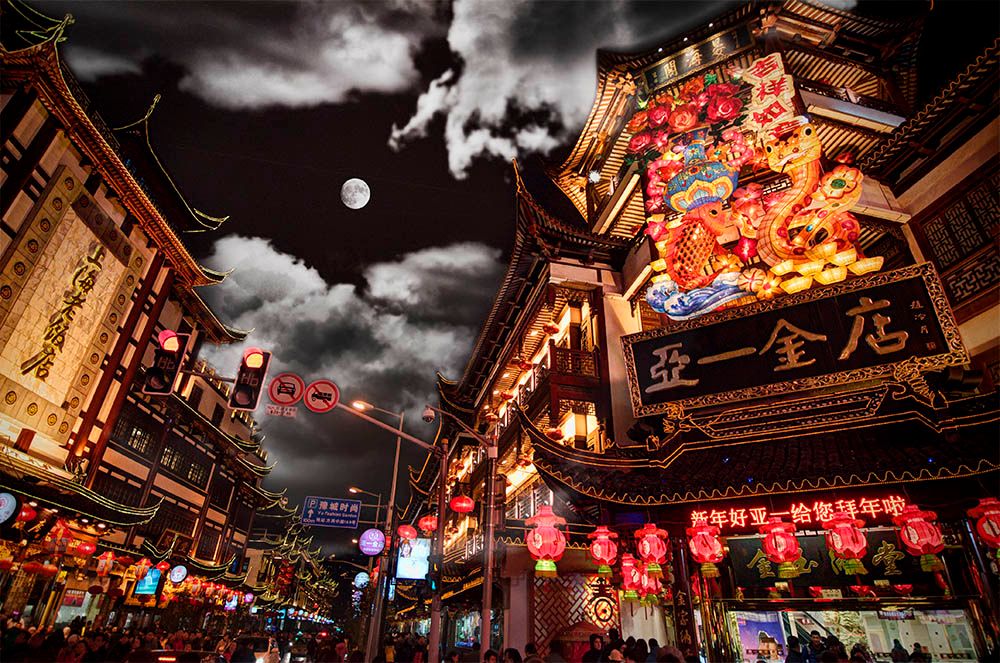China At Night = Night Market or Night Bazaars

Night markets or night bazaars are street markets which operate at night and are generally dedicated to more leisurely strolling, shopping, and eating than more businesslike day markets. They are typically open-air markets.
History
The concept of the Night market traces its roots back to the medieval Chinese Tang dynasty. The Tang government put strict sanctions on Night Markets and their operations in A.D. 836. Towards the end of the Tang Dynasty, economic expansion led to less state regulation and restrictions being lifted on Night Markets. During the Song Dynasty (960-1279), Night Markets played a central role in Chinese nightlife. These markets were found in corners of large cities. Some stayed open for twenty- four hours. Song period Night Markets are also known to have included restaurants and brothels due to being frequently located near business districts and red light districts.
In the 1950s and 1960s, migrant urban workers made up a large base of the Night Market's customers. The vendors created simplified versions of banquet dishes and served Xiao chi foods. The names of the towns came from the dishes they served. The serving of Xiao chi foods attracted Taiwan's local elite. Stories were formed of how well-known politicians and intellectuals visited Night Market stalls.
Night Markets started to embody the local and the global modern popular culture because of commercial industries. Because of the global recession in the 1970s, canceled imports created more opportunities for vendors selling light industry and family made goods. This was due to more products becoming available to local markets. Night Marketing Networks were formed and sold Taiwan's light industry goods.
Because of the prosperity of the Night Markets, some traditional businesses were replaced by higher quality garment and shoe stores in the 1980s. The energetic Night Markets were known during this period where neon signs, loud music and light displays were used to attract customers. The new replaced the old, cafeterias instead of restaurants, gift shops instead of sundry shops, sportswear outlets instead of low quality garment stores. At Taiwan's stock market surge, chains started opening franchises that were located in or near the Night Markets. These included fast food outlets such as McDonald's and convenience stores such as 7-Elevens, which were then followed by garment stores. This transformation continued in the 1990s, when chains who sold higher grade merchandise replaced individually owned businesses.
Night Markets changed from places that sold traditional snack food and handicrafts to modern centers of popular culture. Markets rapidly responded to new trends by producing their own versions of popular goods, especially in the 1990s, when copyright and intellectual property laws were only loosely enforced. These counterfeit items that now flooded the market attracted young customers. In recent years, these laws are now more strictly enforced so counterfeit items are usually found in traveling Night Markets. The Night Markets are now known for not personifying Taiwan as it once did. The Night Market was transformed to accommodate to the modern capitalist economies of present day
thx for sharing